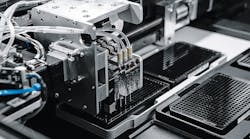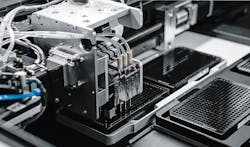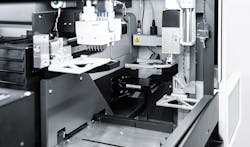It typically takes two to four days before doctors can determine the best antibiotic needed to treat a patient’s infection. In the meantime, many physicians prescribe broad-spectrum antibiotics for a patient which can cause problems. It raises the risk that some bacteria will evolve and acquire resistance to that powerful antibiotic and render it less helpful for future infections. It also means the patient is not getting the best drug treatment possible, which can forestall or delay the patient’s recovery.
A new diagnostic machine from SeLux, the Next Generation Phenotyping (NGP) platform, finds the antibiotic most effective against the exact bacteria that has infected the patient all within 24 hours. This saves time and gets the patient on the best course of drugs sooner.
In the NGP machine, the patient’s blood plasma or other type of sample is placed in up to 384 wells of a microplate. Different types and doses of antibiotics are placed in each sample-filled well. Then each sample is tested and analyzed to see if the antibiotic eliminated the infectious bacteria, and an algorithm checks each antibiotic dilution to see which delivers the best targeted response.
To ensure accuracy and consistency, SeLux decided to use several dosing heads on the NGP to deliver drugs to the samples in precise microliter doses. To ensure the Festo VTOE and VTOI heads are properly controlled, a Festo VAEM control is used. For speed and automation, the design relies on Festo’s EXCM-30 handling portal to move microplates and its EHMD rotary gripper module to rotate vials, and opens or closes the lids on them.
Under current standards of care, sick patients are given broad-spectrum antibiotics based primarily on the treating physician’s historical experience. Using more targeted antibiotics, which would work better and avoid overprescribing broad-spectrum cures, takes one to four days longer than if the NGP machine is used.
In traditional testing, a blood sample is drawn and sent to be cultured, which can take 16 to 24 hours. If bacterium grows, which verifies the presence of an infection, the bacteria is purified—a process that takes another 24 hours. At this point, a range of antibiotics can finally be tested to find the one that best targets the specific infection, and the first results will take another day. If the patient has an infection resistant to a range of antibiotics, it could take up to five days to pinpoint the best one.
Current machines used in this process are outdated and have not changed since their invention decades ago. For example, current diagnostic machines can only test 12 to 15 antibiotics at a time, even though doctors have more than 35 commercially available antibiotics to choose from. (The NPG machine can handle 384 antibiotics or variations in dilution.) What’s more, newly FDA-approved breakthrough antibiotics often don’t get tested because current machines can’t accommodate them; there isn’t enough room to include them on machines already working to capacity testing traditional and well-known antibiotics.


